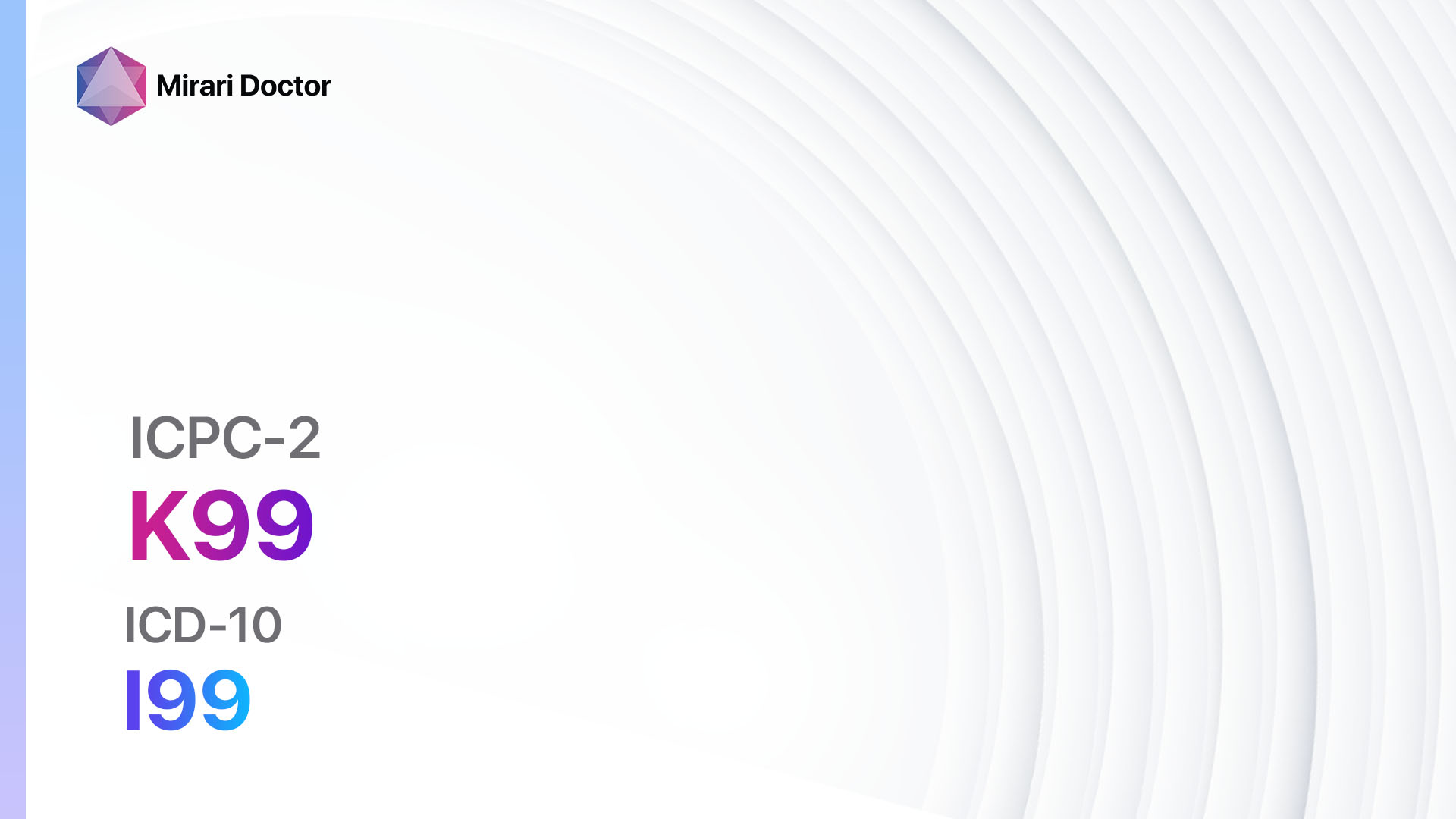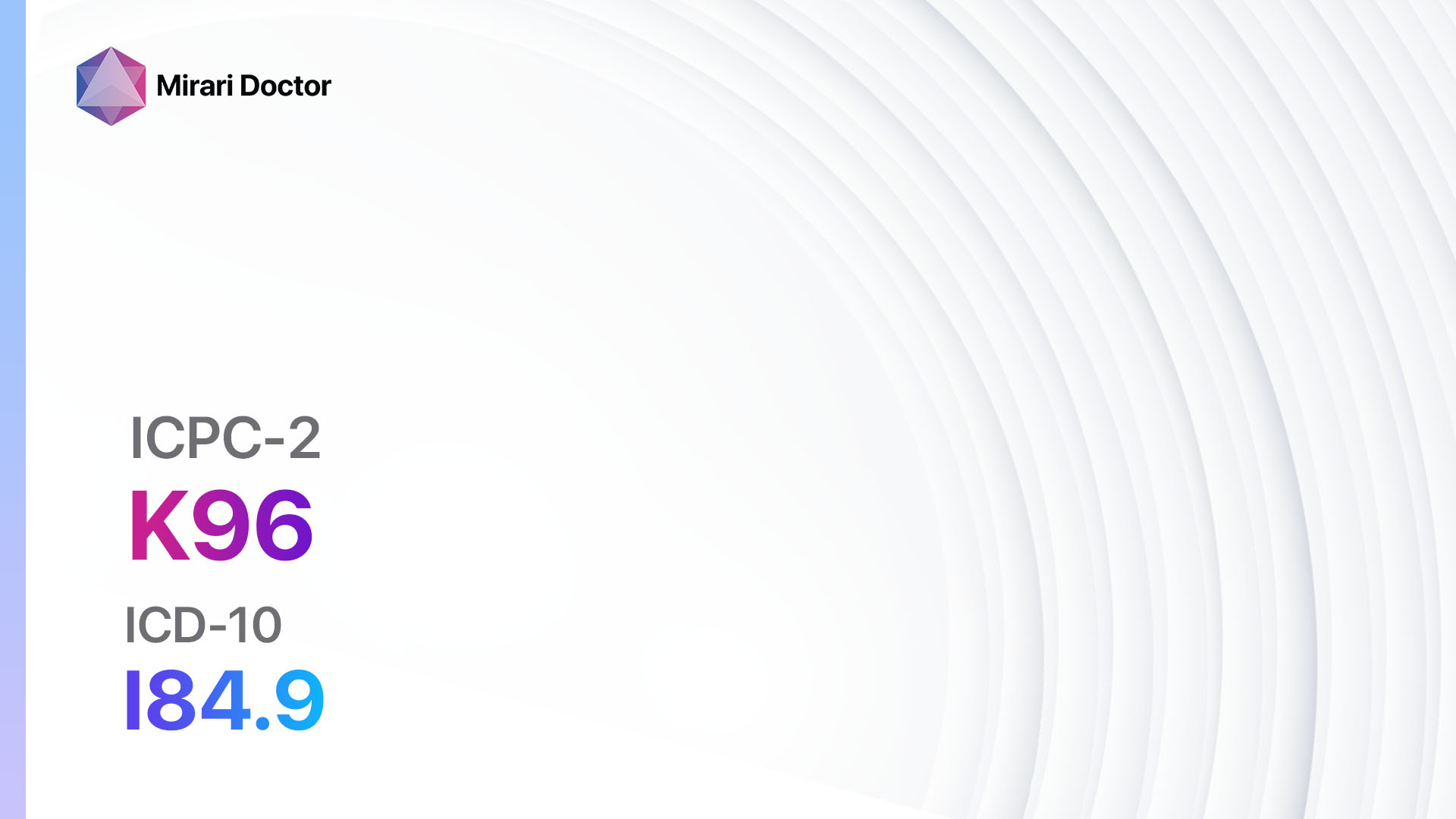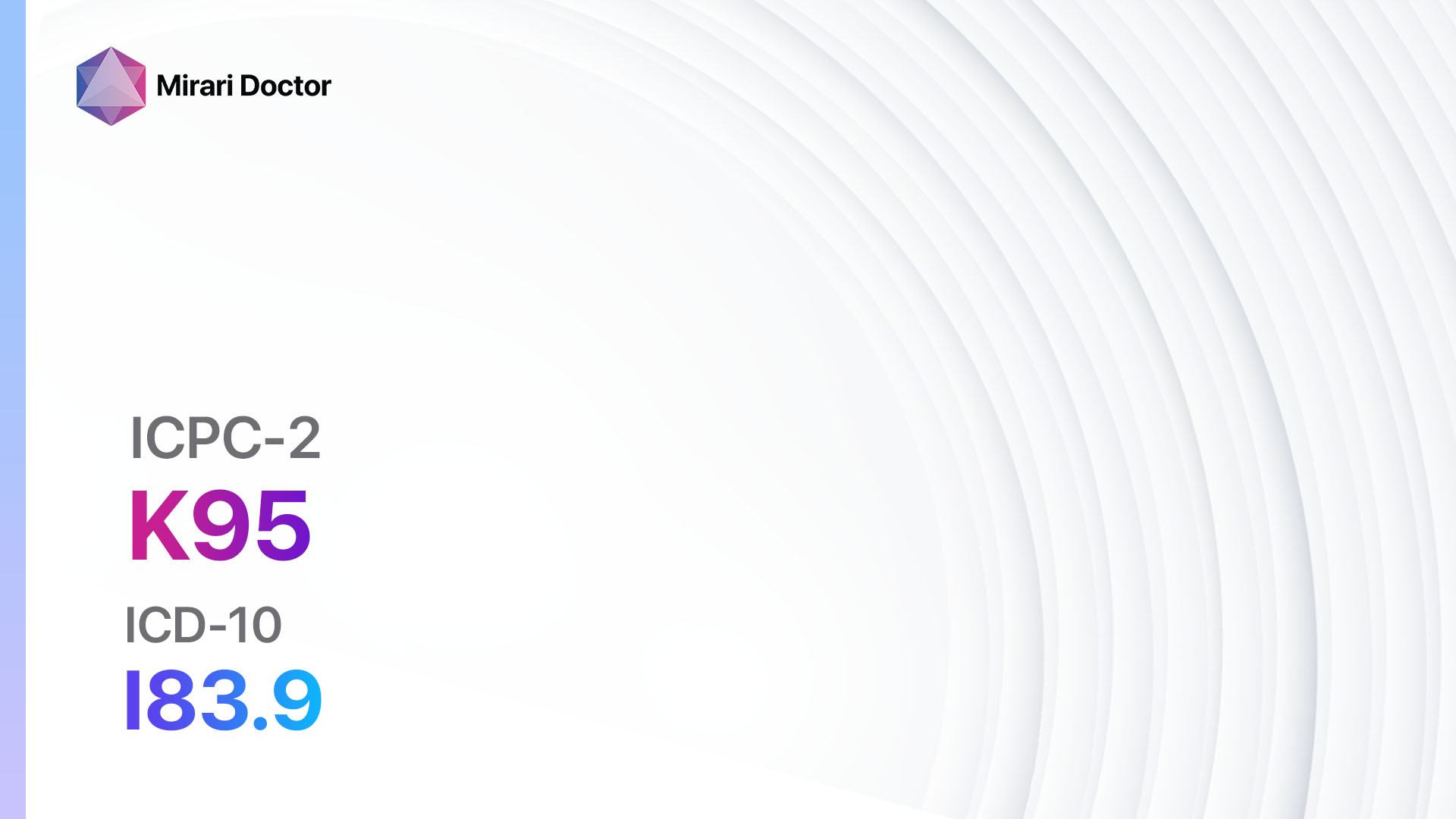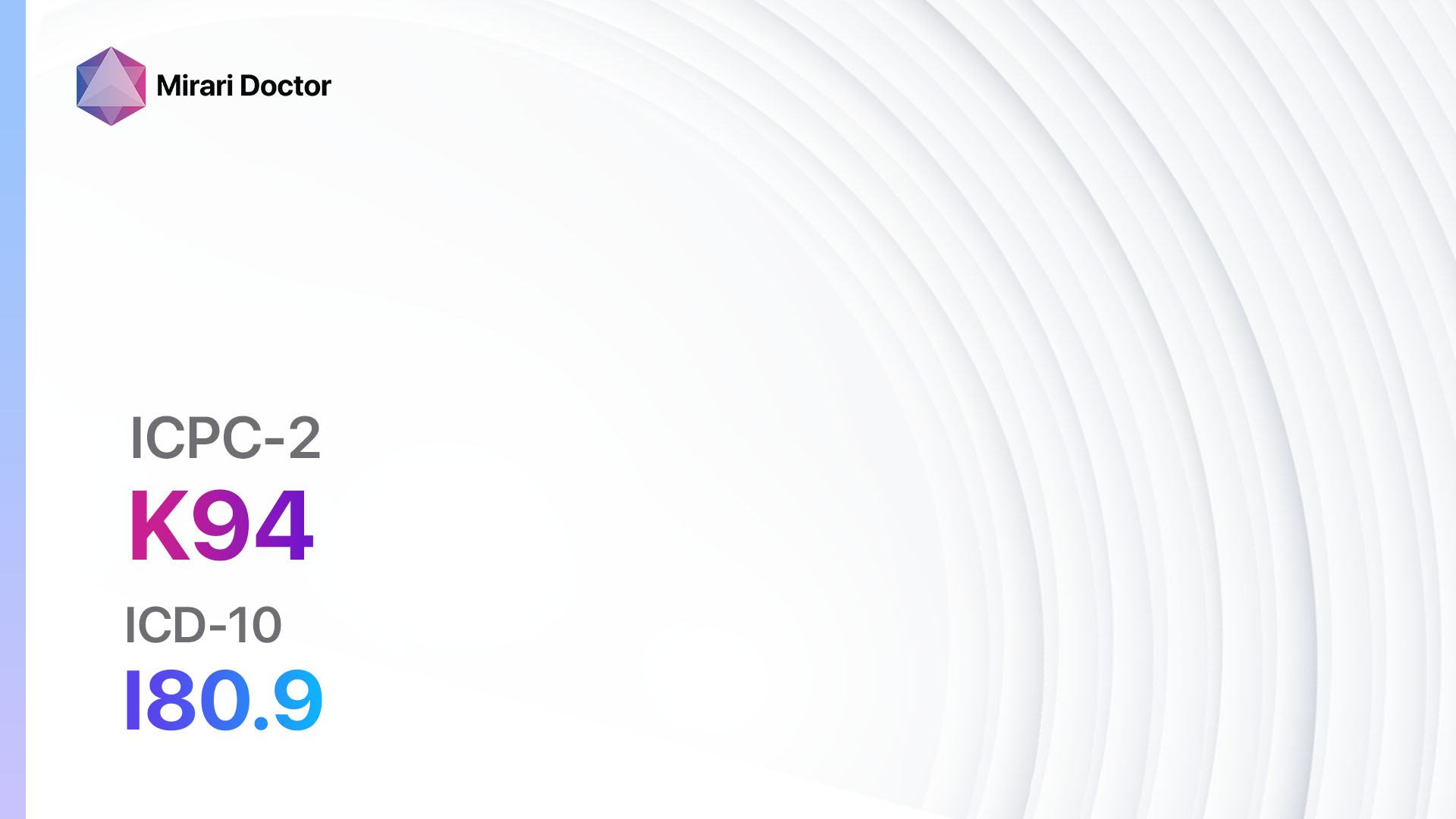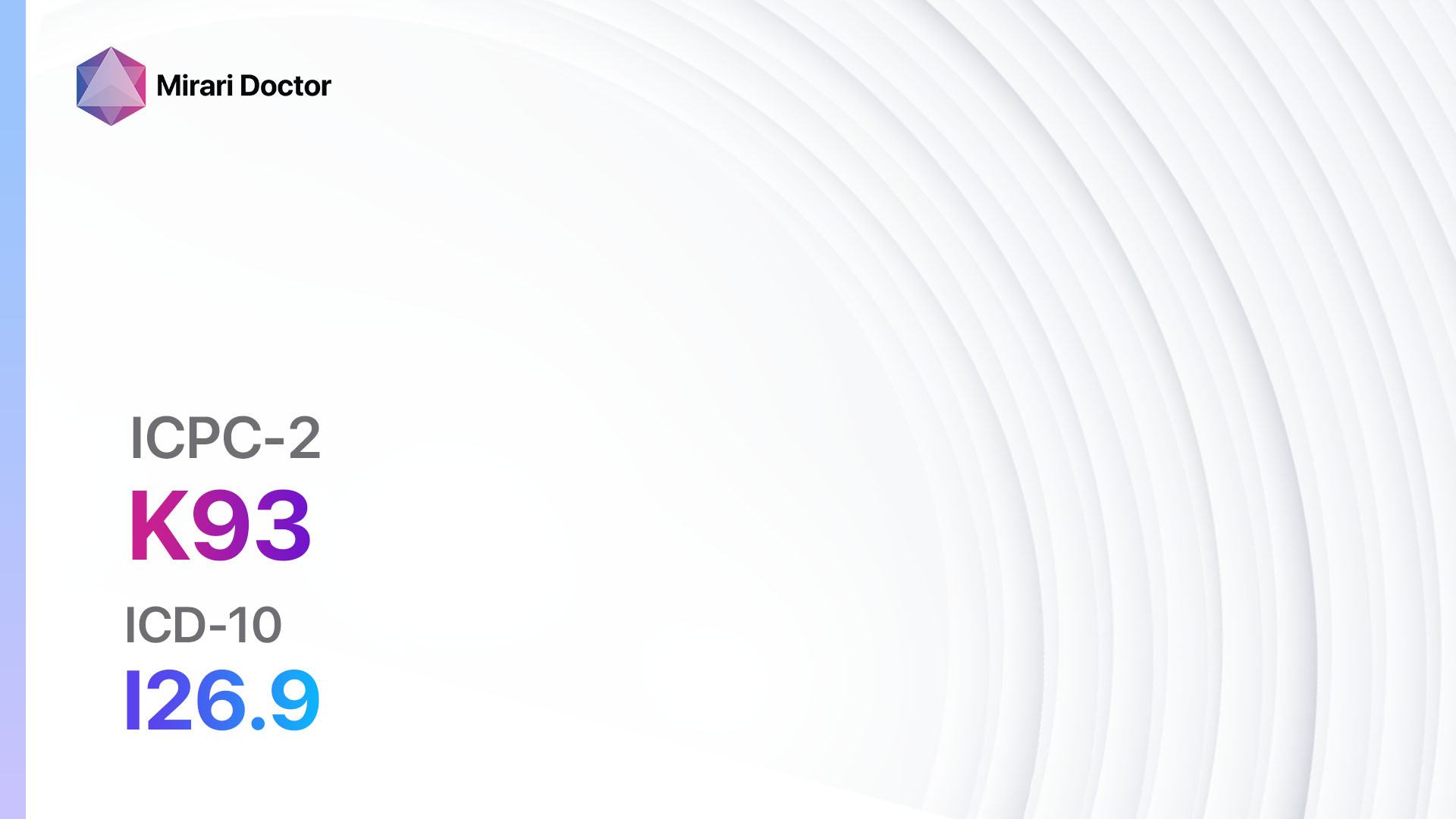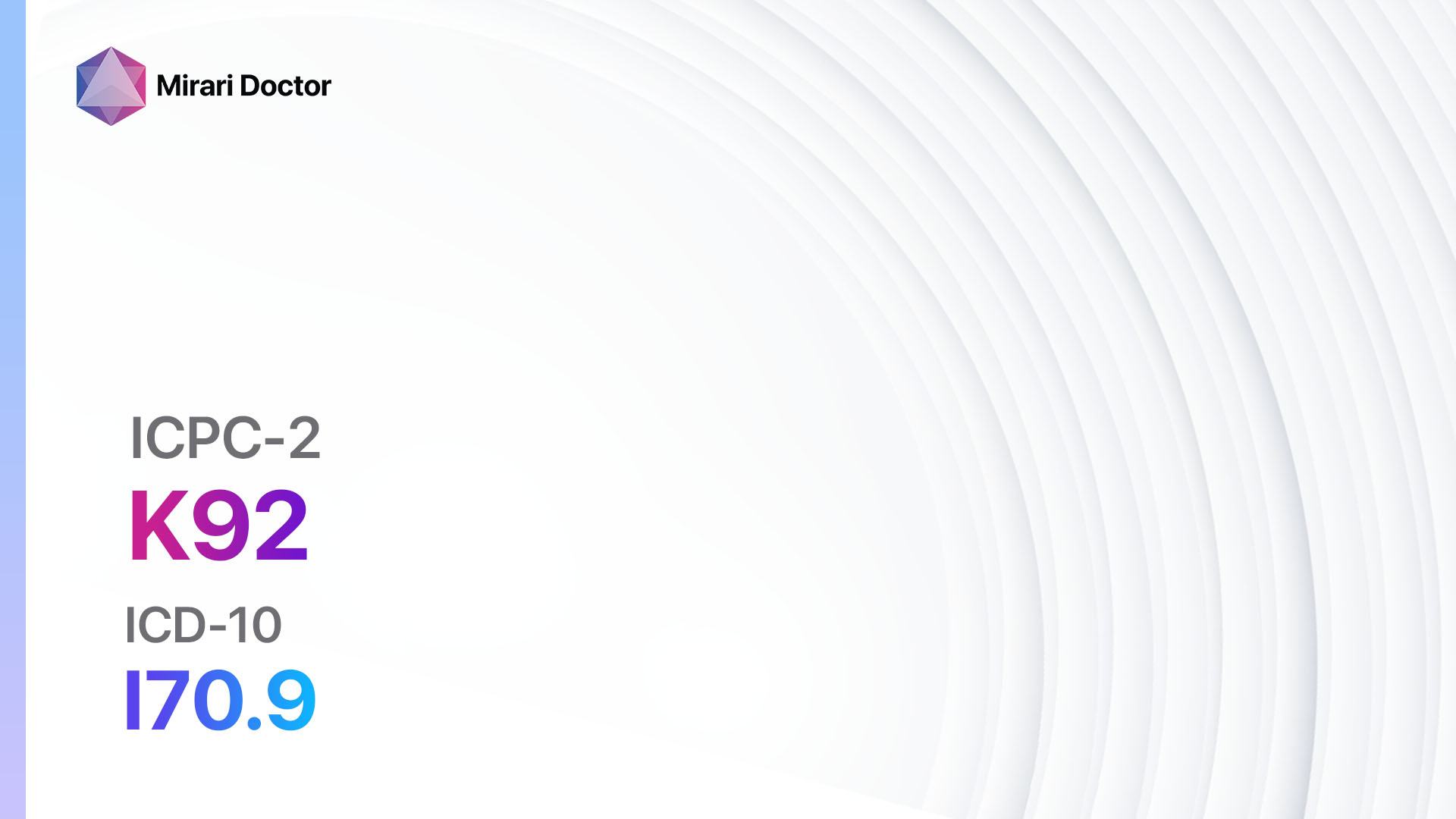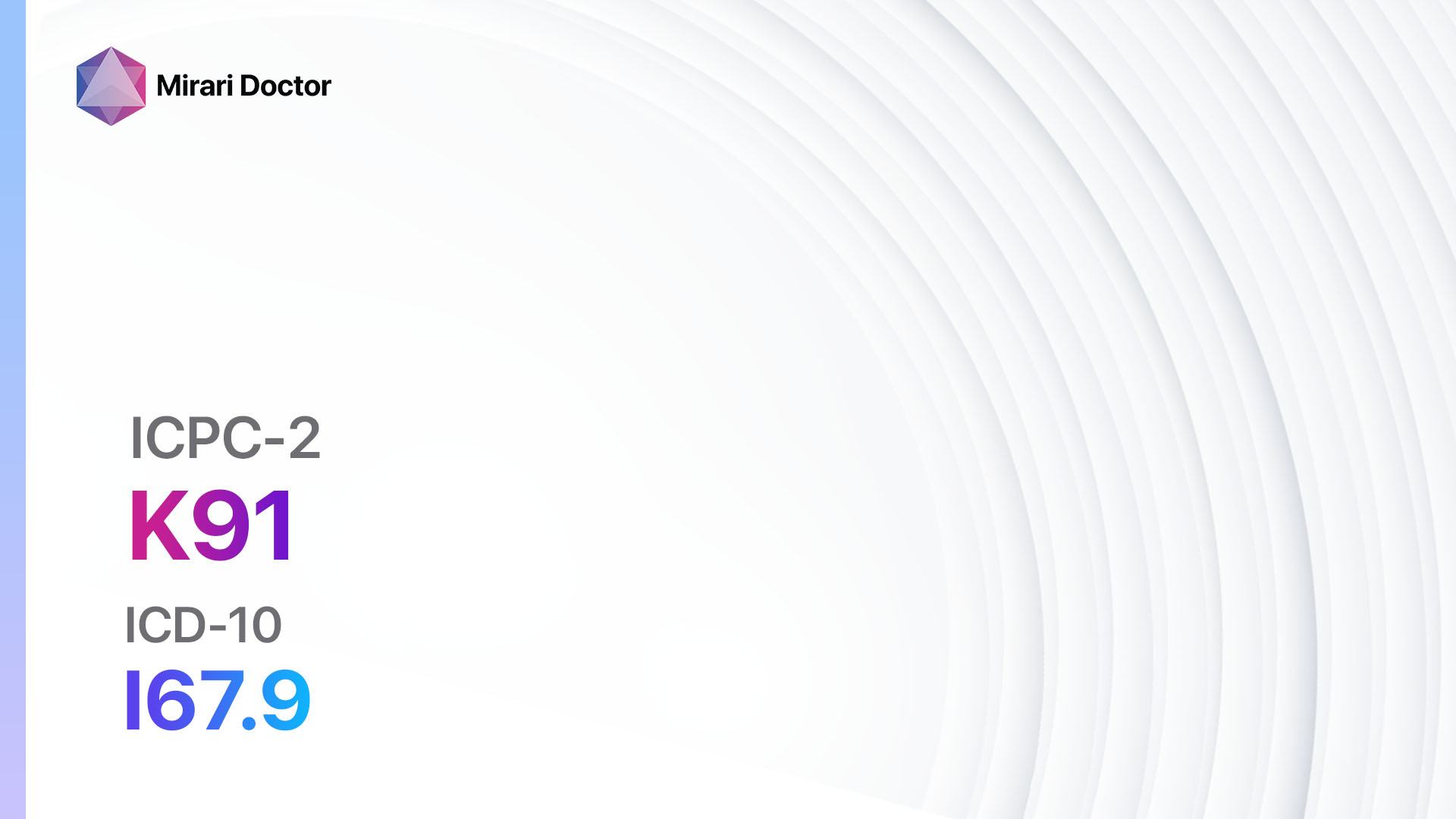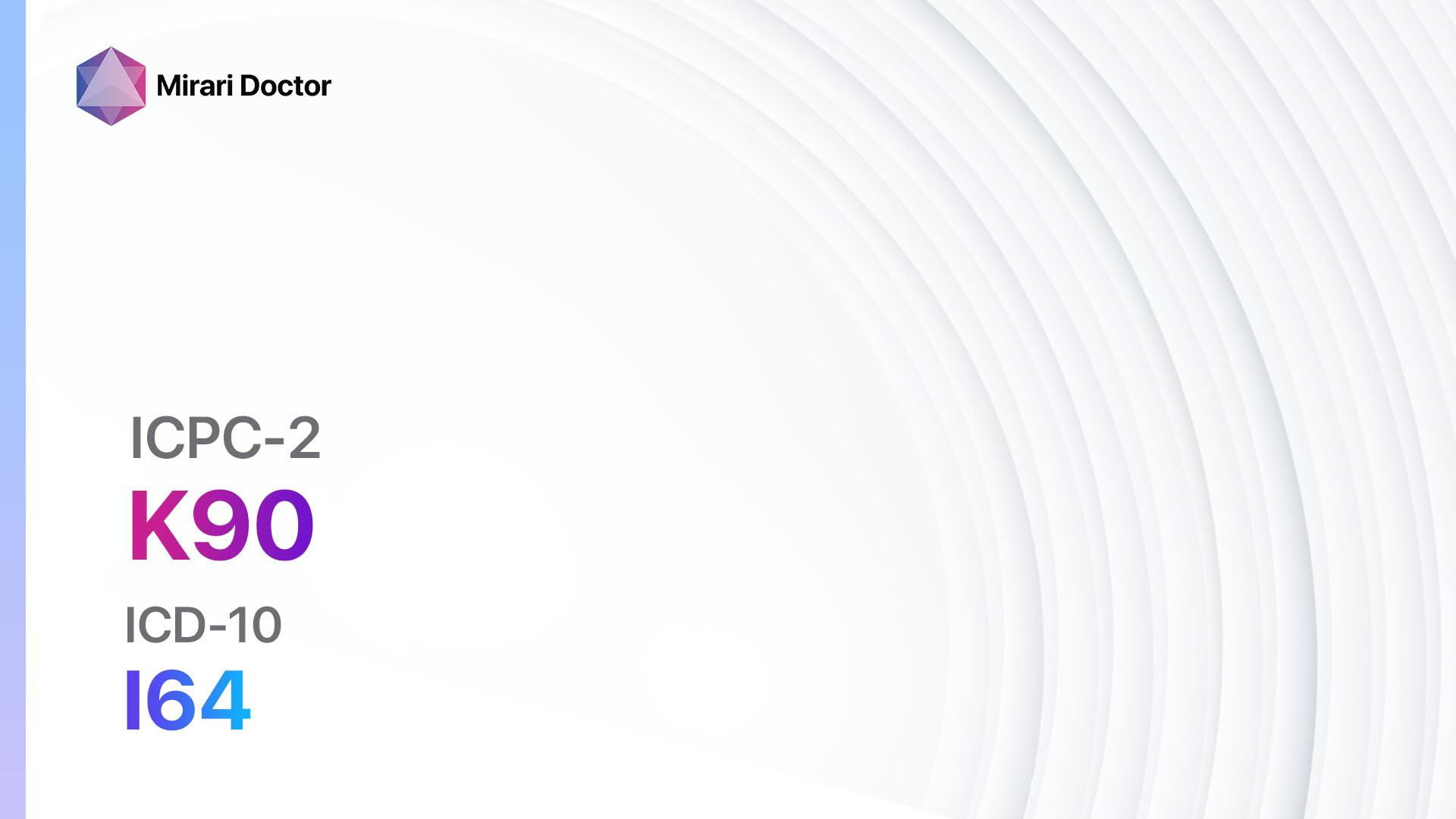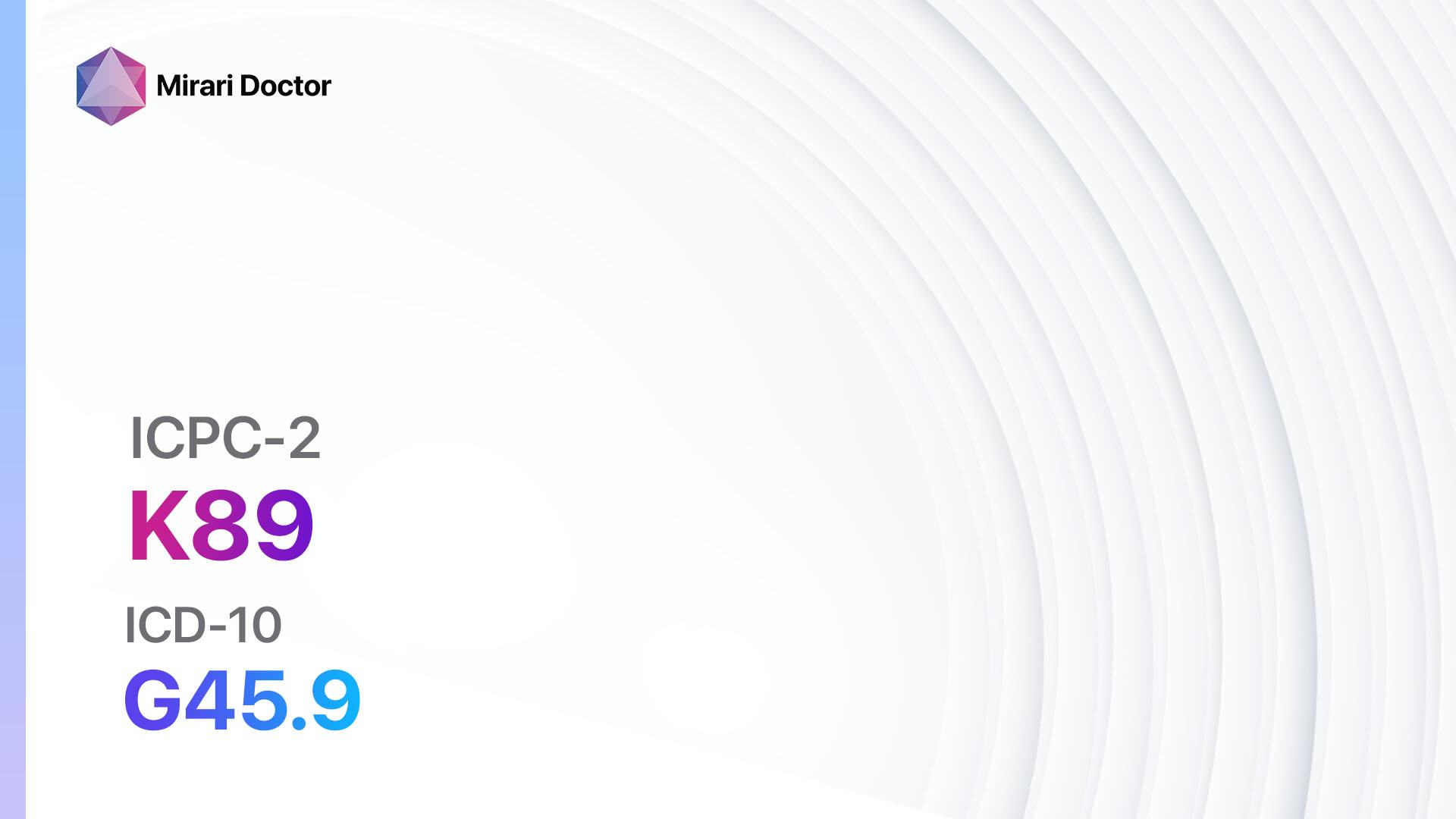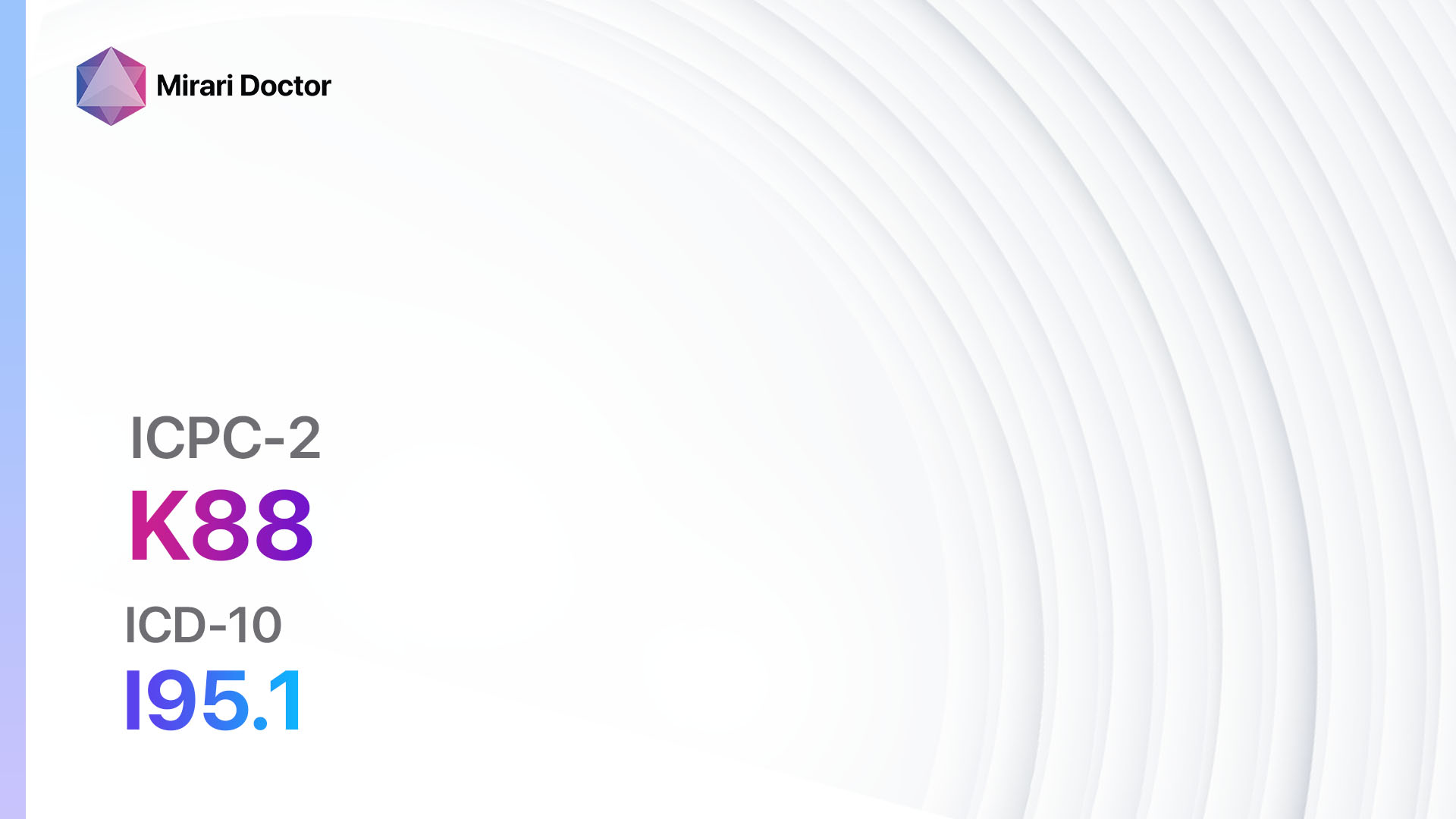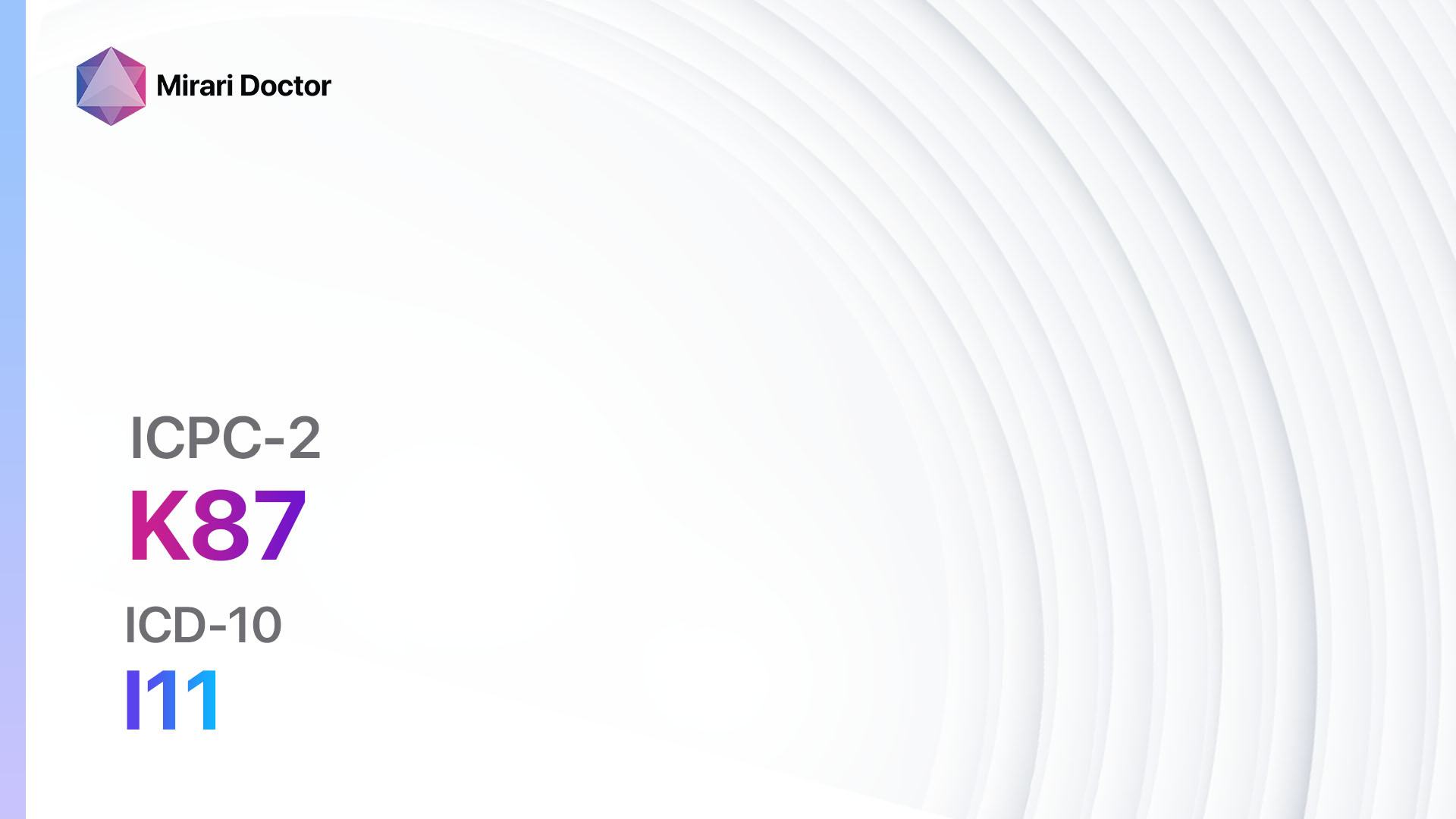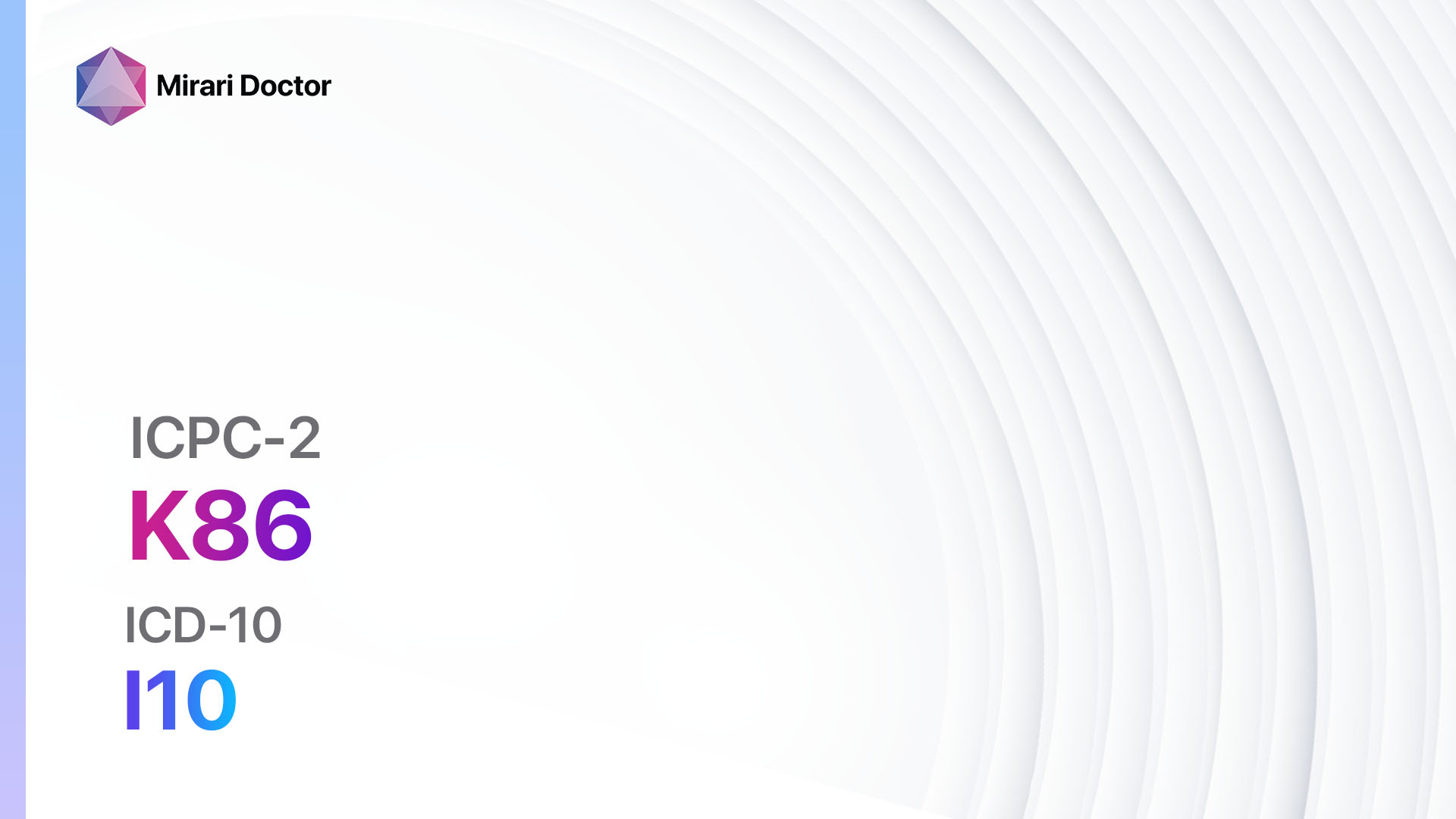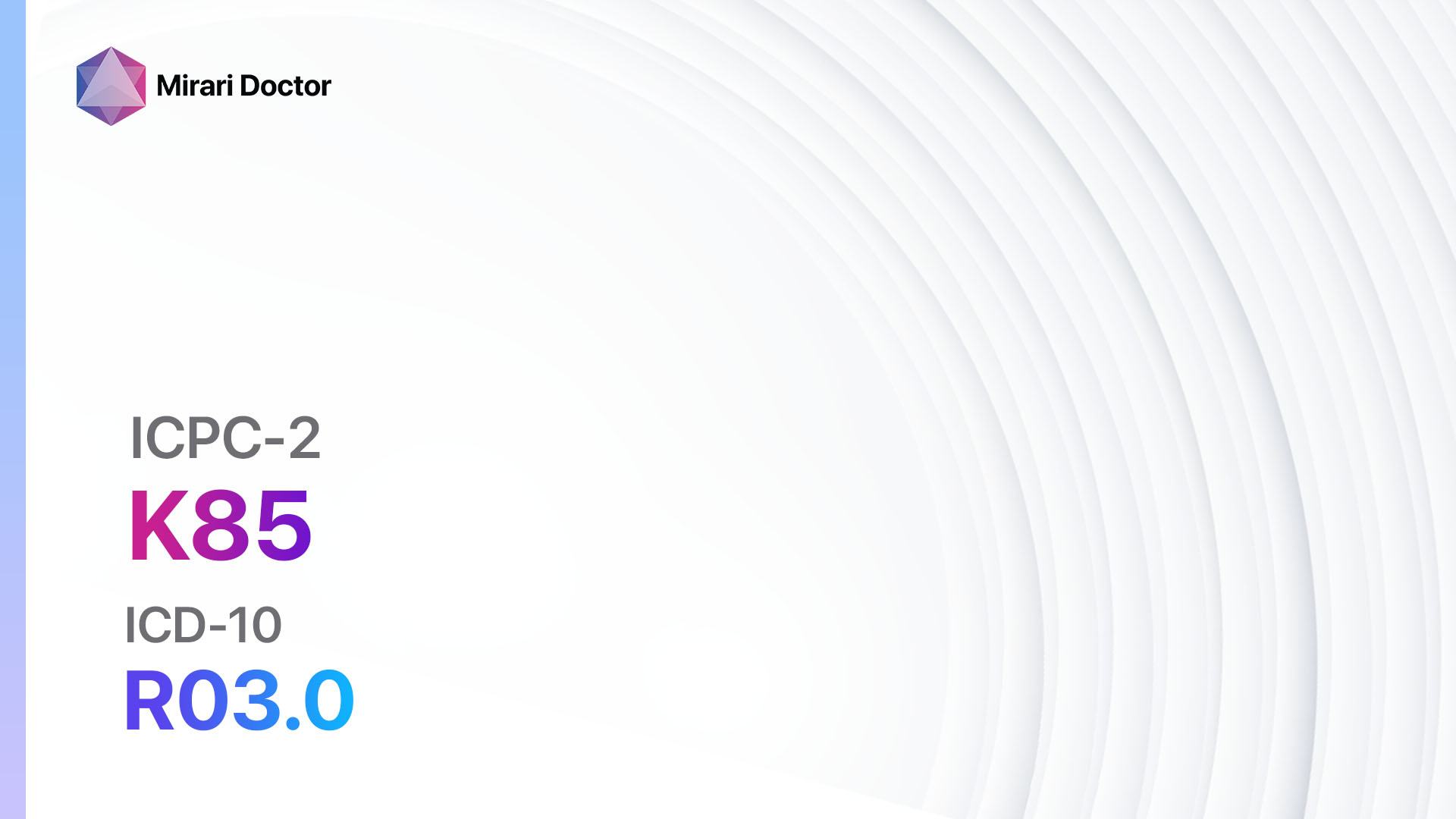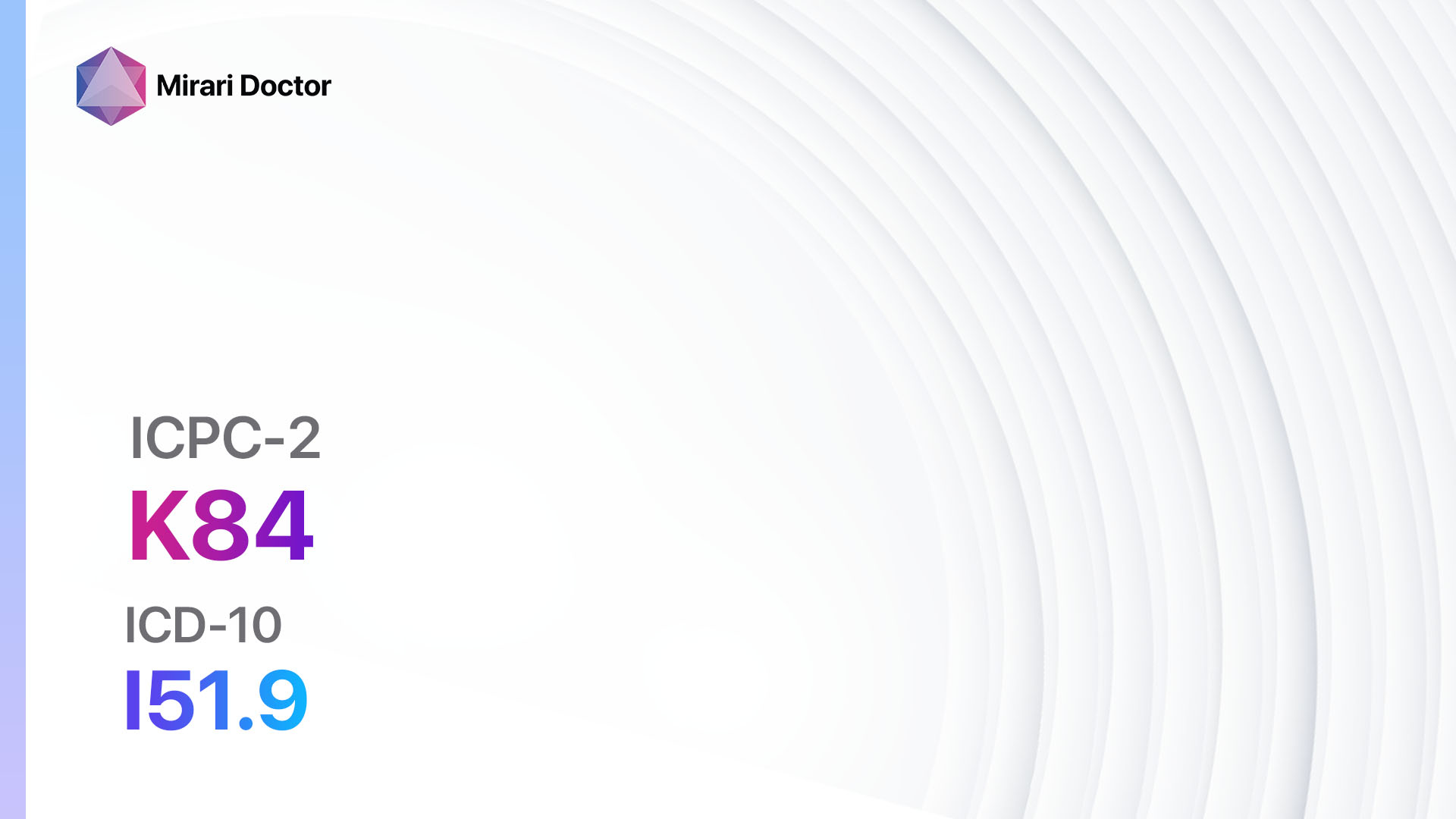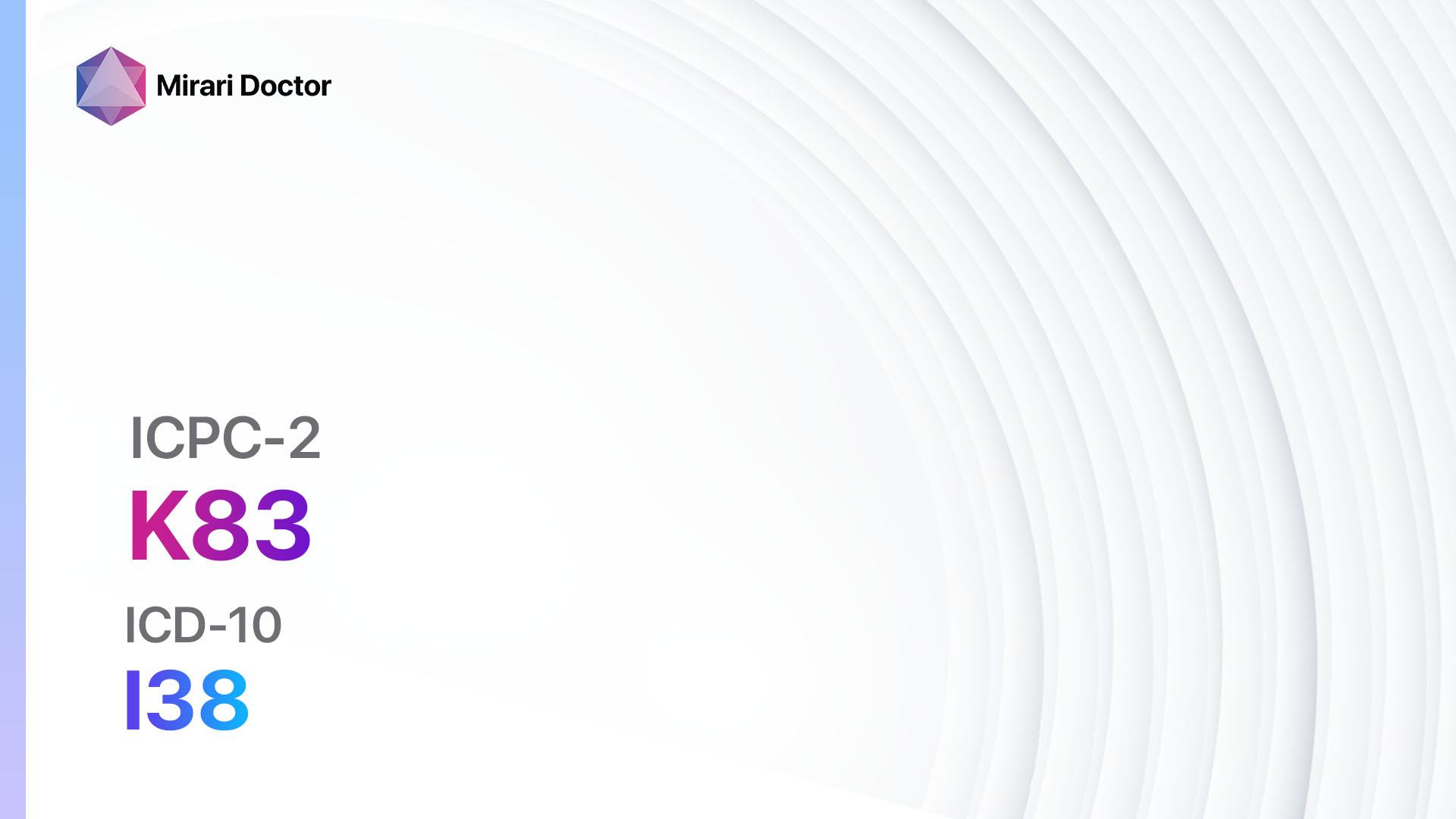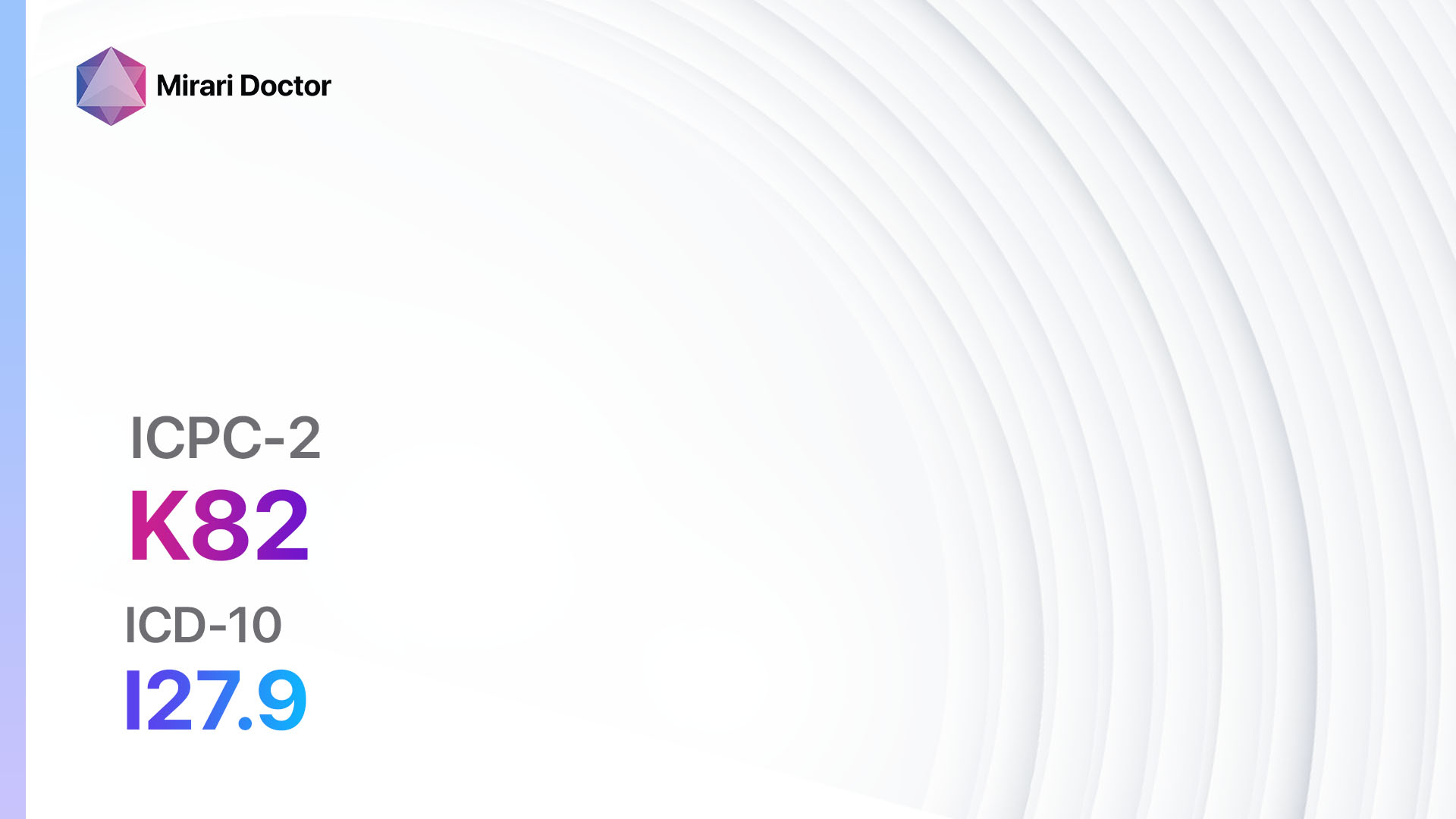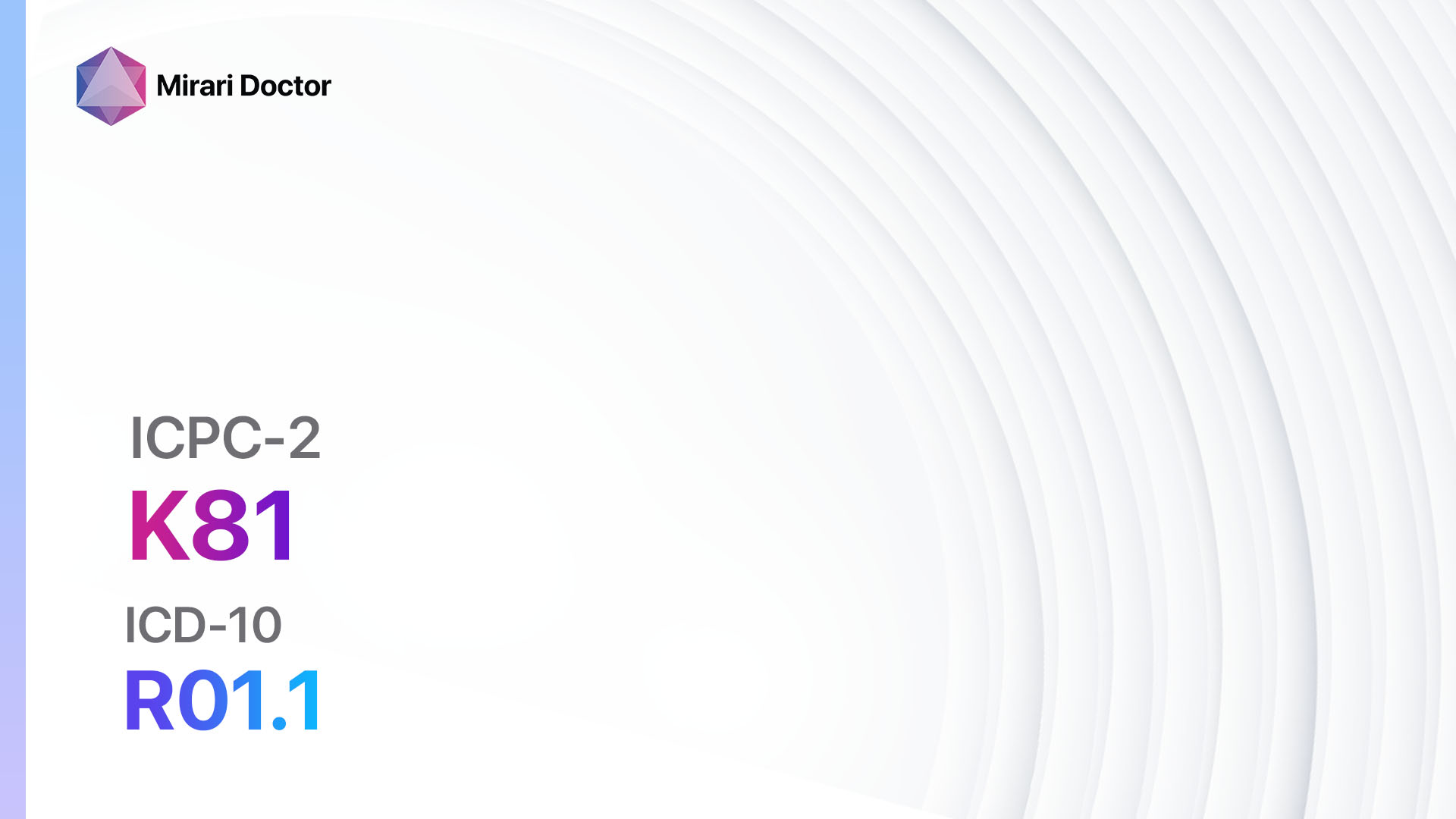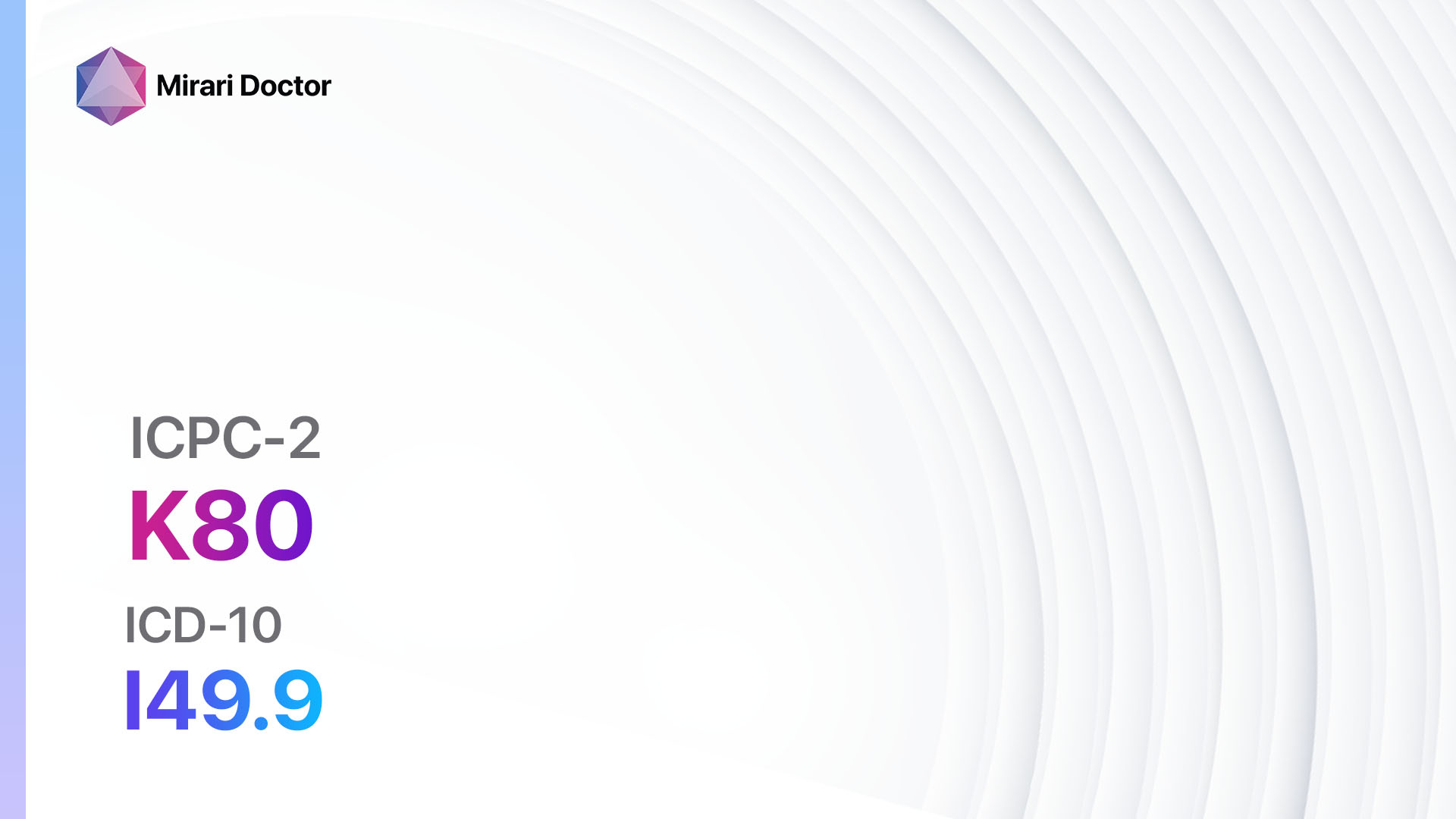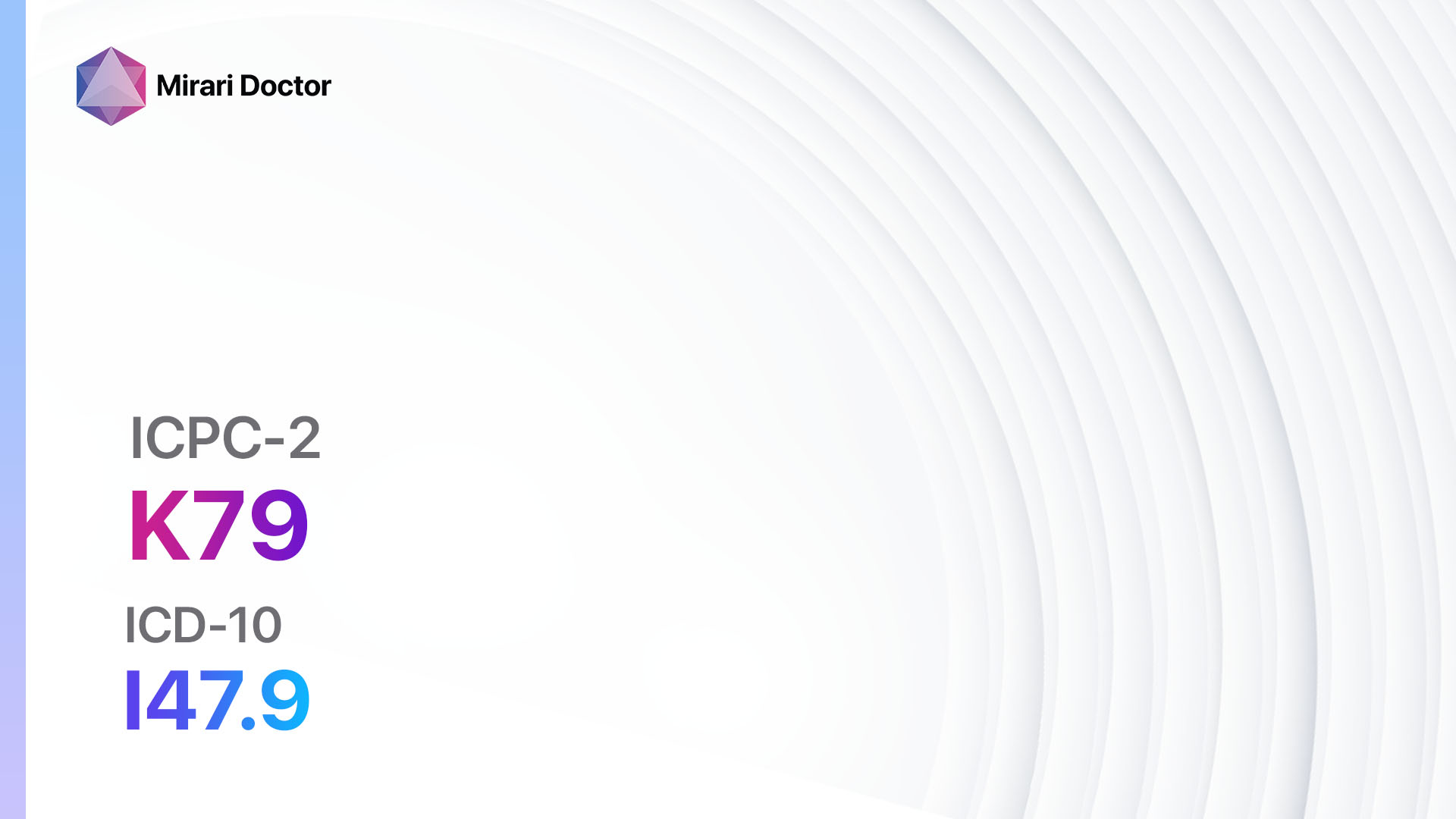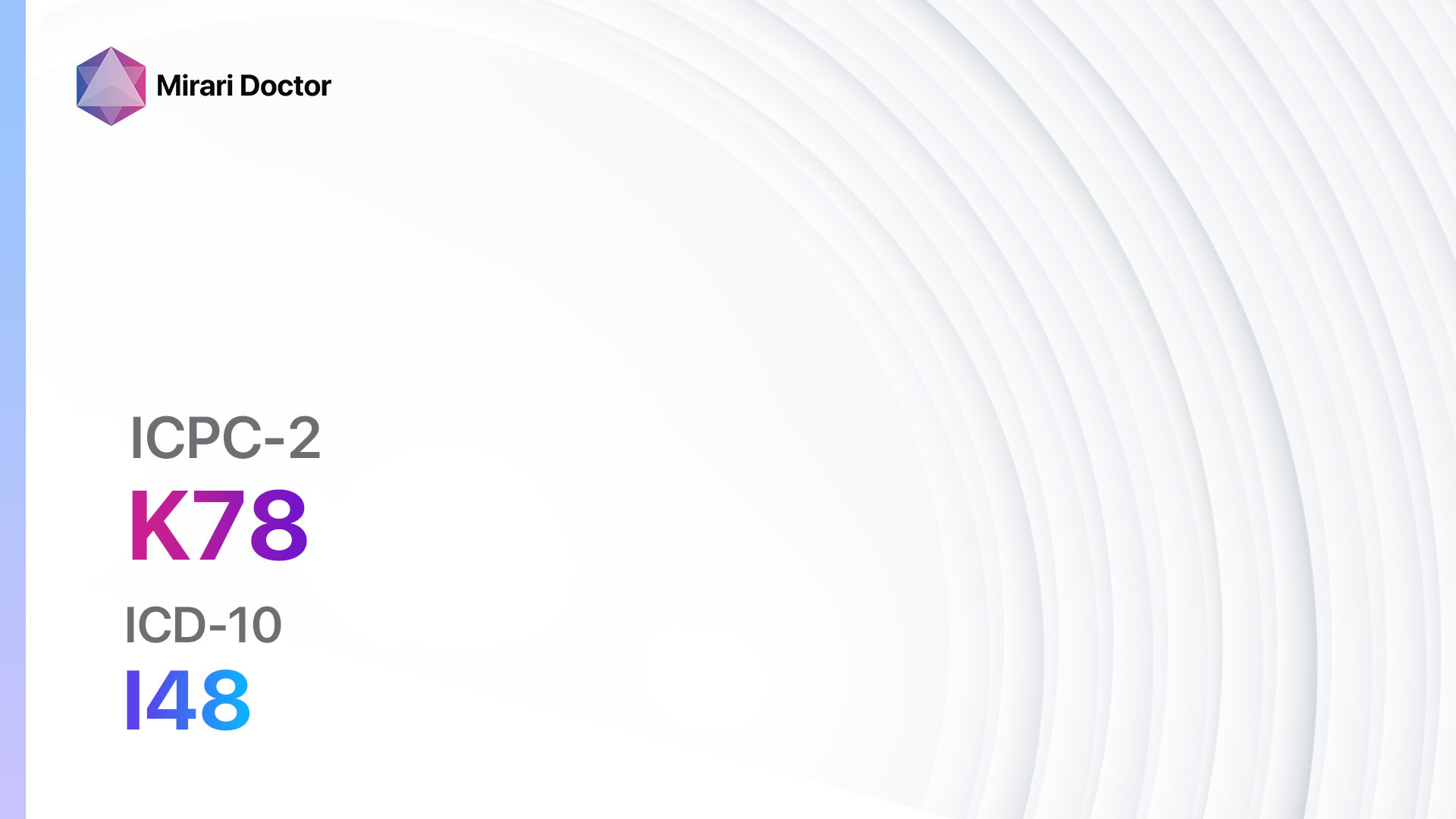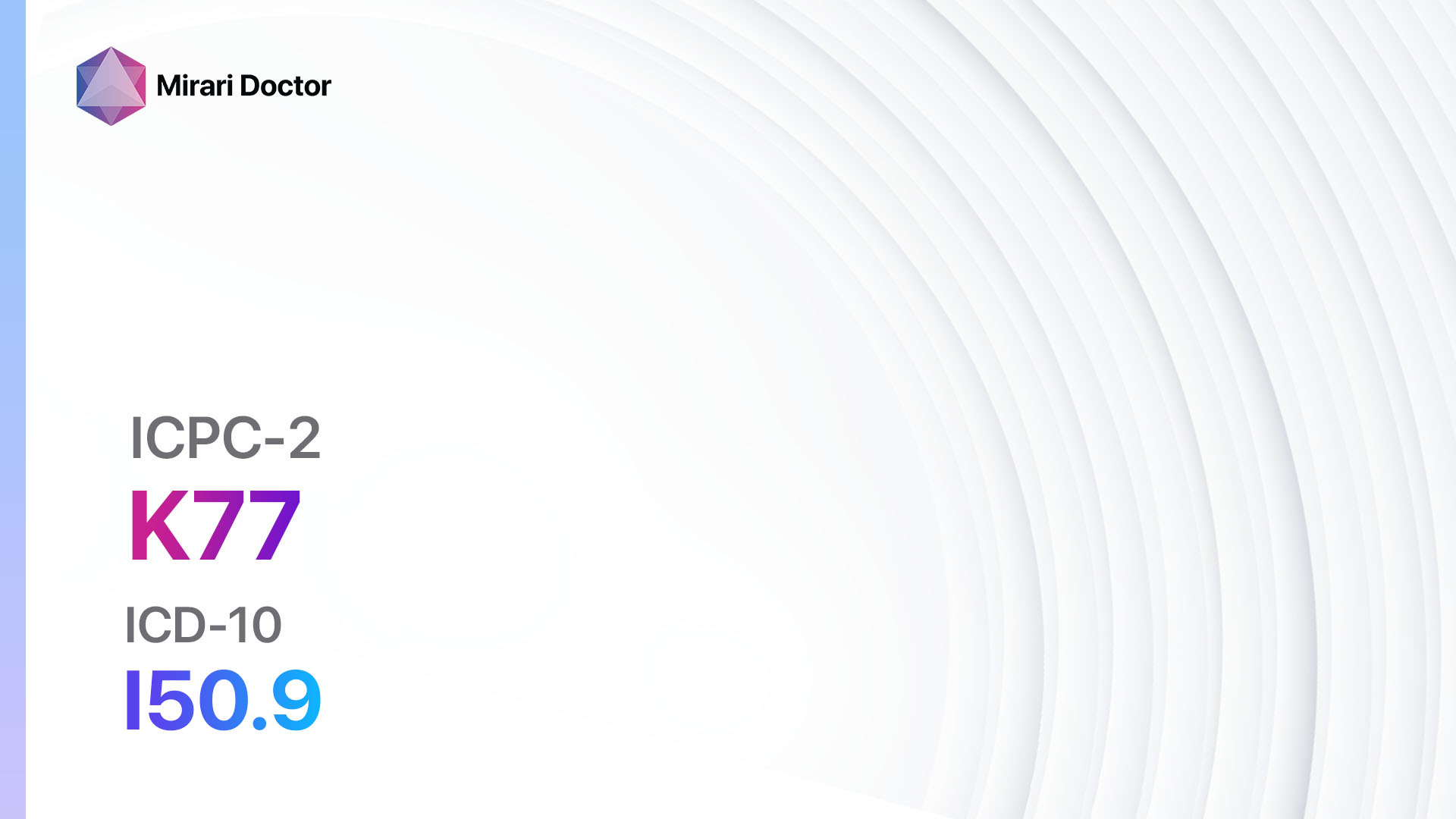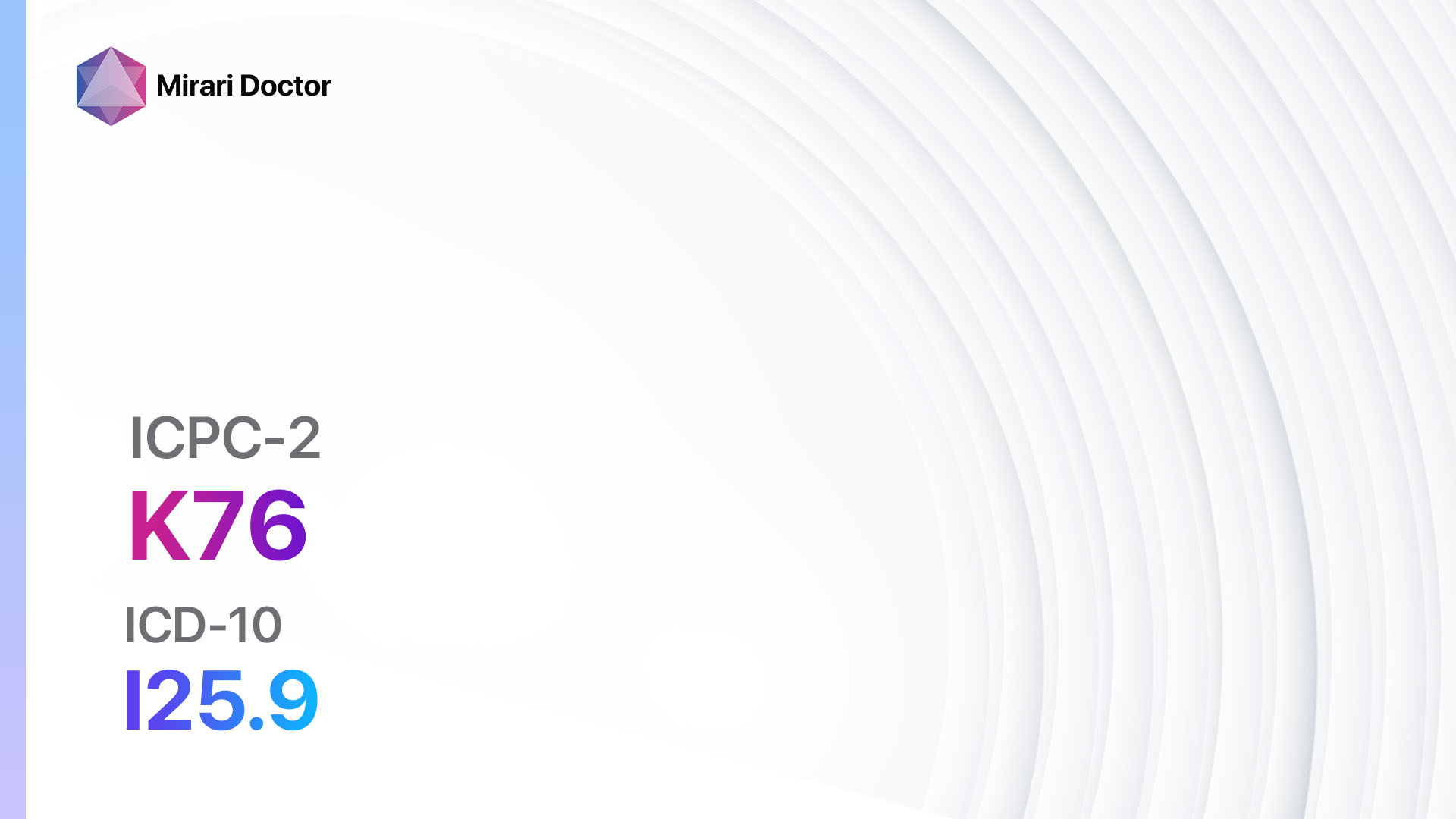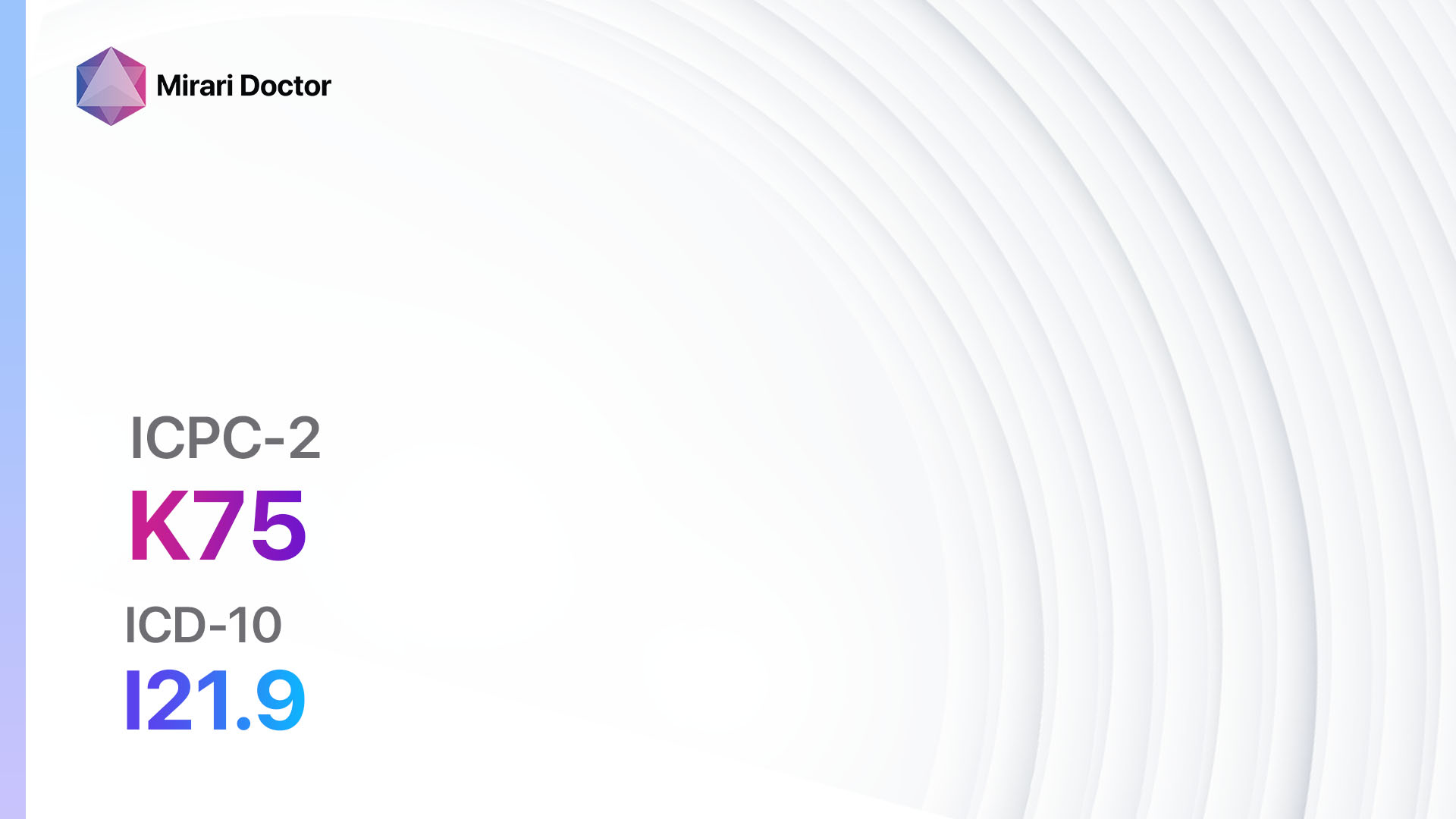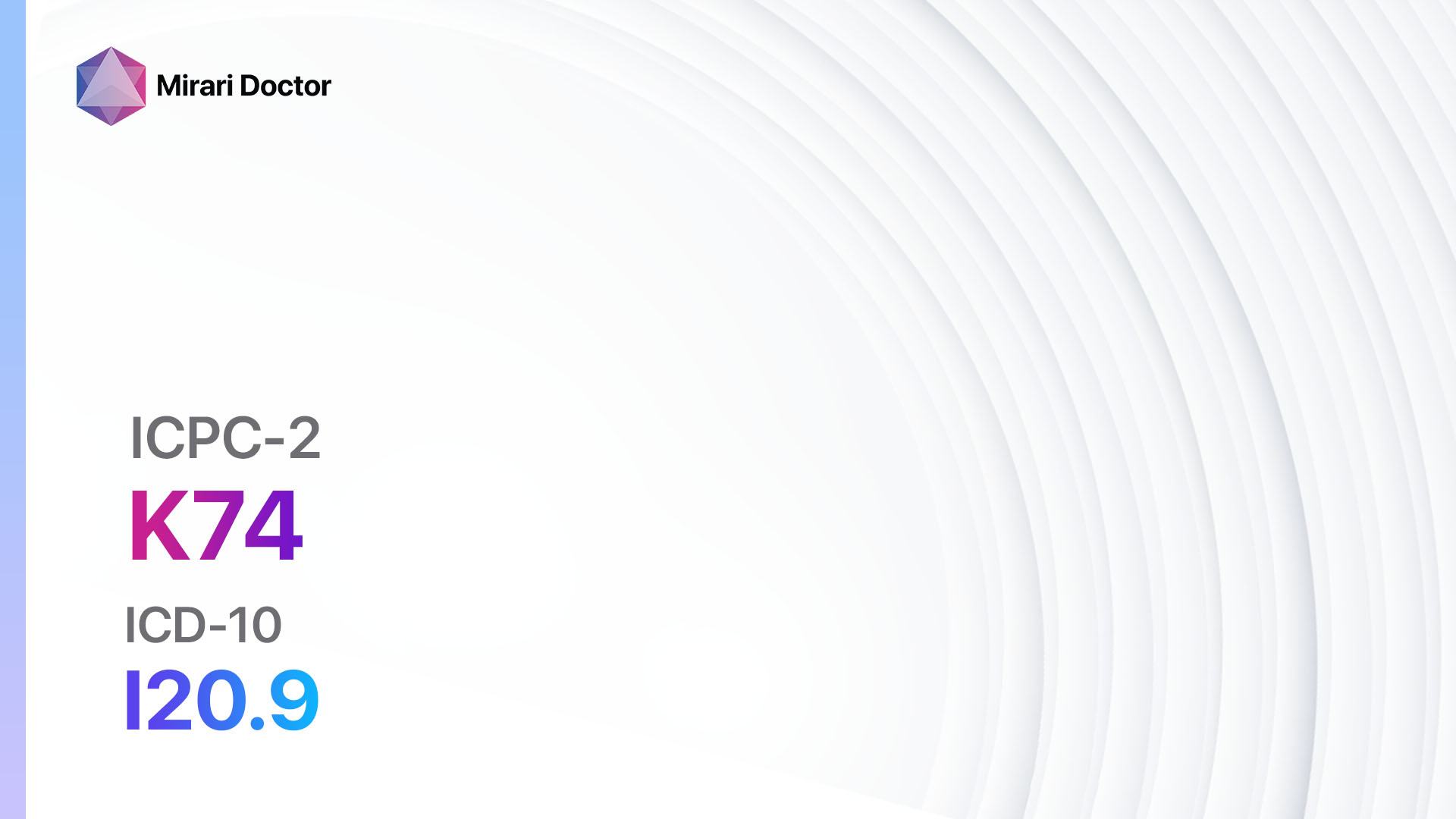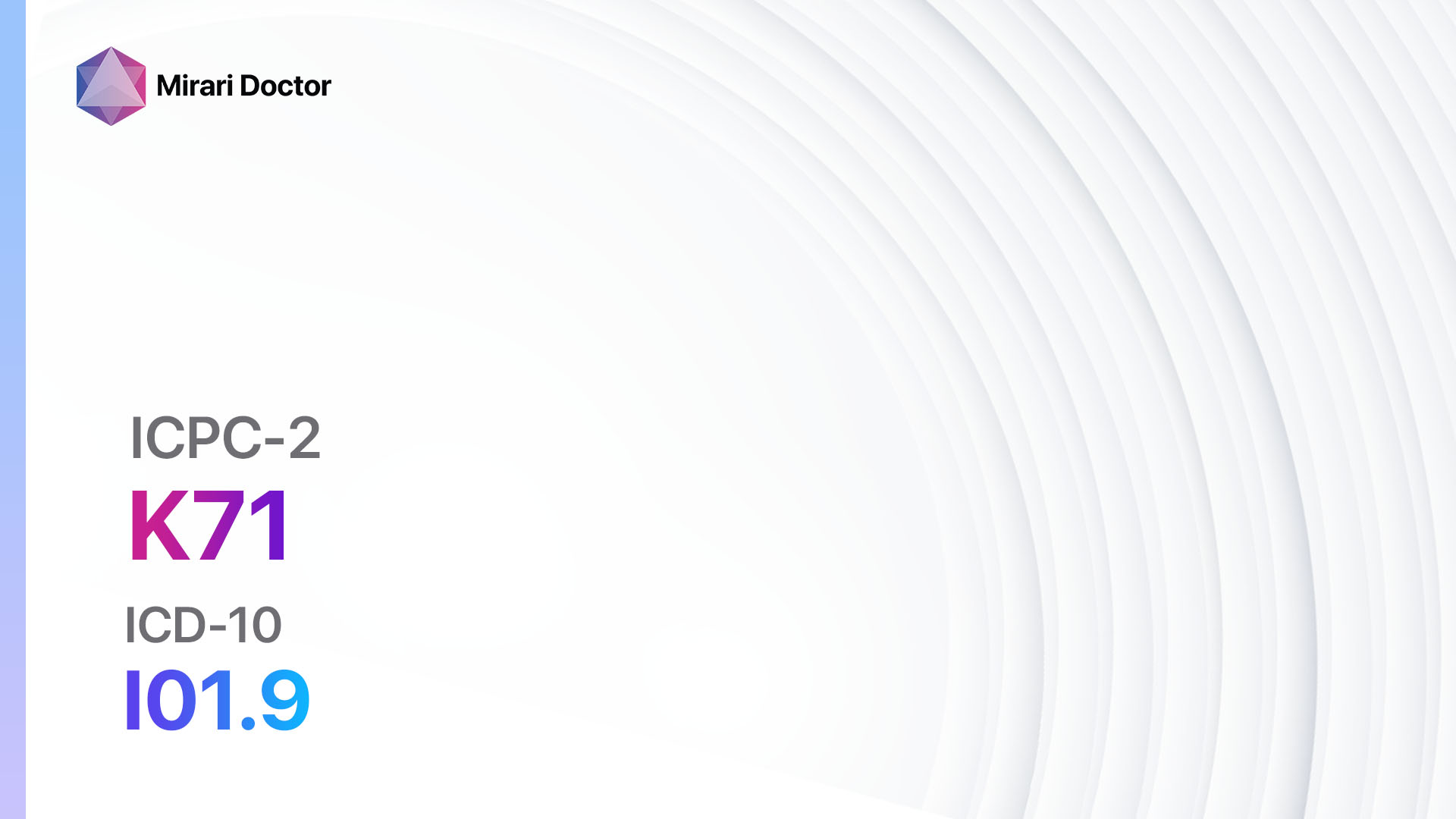
Introduction
Rheumatic fever is a serious inflammatory disease that can develop as a complication of untreated strep throat infection. It primarily affects the heart, joints, skin, and brain.[1] Rheumatic heart disease refers to the long-term damage to the heart valves caused by rheumatic fever.[2] The aim of this guide is to provide a comprehensive overview of the symptoms, causes, diagnostic steps, possible interventions, and lifestyle interventions for rheumatic fever/heart disease.
Codes
- ICPC-2 Code: K71 Rheumatic fever/heart disease[3]
- ICD-10 Code: I01.9 Acute rheumatic heart disease, unspecified[4]
Symptoms
- Fever: Persistent high body temperature.[5]
- Joint pain and swelling: Typically affects large joints, such as the knees, ankles, elbows, and wrists.[6]
- Chest pain: Sharp or stabbing pain in the chest.[7]
- Shortness of breath: Difficulty breathing or feeling breathless.[8]
- Fatigue: Feeling tired or exhausted.[9]
- Skin rash: Red or pink rash, typically on the trunk, arms, or legs.[10]
- Heart murmur: Abnormal heart sound heard through a stethoscope.
- Jerky body movements: Involuntary movements of the limbs or facial muscles.
- Swollen lymph nodes: Enlarged lymph nodes, particularly in the neck.
Causes
- Streptococcal infection: Rheumatic fever is caused by an untreated or inadequately treated strep throat infection caused by the Streptococcus pyogenes bacteria.
- Genetic predisposition: Some individuals may have a genetic predisposition to developing rheumatic fever.
Diagnostic Steps
Medical History
- Gather information about the patient’s recent illnesses, including any history of strep throat or other infections.
- Assess the presence of symptoms associated with rheumatic fever, such as joint pain, chest pain, shortness of breath, and skin rash.
- Determine if the patient has a family history of rheumatic fever or heart disease.
Physical Examination
- Listen to the patient’s heart using a stethoscope to detect any abnormal heart sounds or murmurs.
- Examine the patient’s joints for signs of inflammation, such as swelling, redness, or limited range of motion.
- Check for the presence of a skin rash or other skin abnormalities.
- Assess the patient’s overall physical condition, including vital signs such as blood pressure, heart rate, and temperature.
Laboratory Tests
- Throat swab culture: To confirm the presence of strep throat infection.
- Blood tests: To check for the presence of certain antibodies that indicate an immune response to strep infection.
- Erythrocyte sedimentation rate (ESR): A blood test that measures the rate at which red blood cells settle in a tube, which can indicate inflammation in the body.
- C-reactive protein (CRP) test: A blood test that measures the level of CRP, a marker of inflammation.
- Electrocardiogram (ECG): To assess the electrical activity of the heart and detect any abnormalities.
- Echocardiogram: An ultrasound of the heart to evaluate the structure and function of the heart valves.
Diagnostic Imaging
- Chest X-ray: To assess the size and shape of the heart and detect any abnormalities.
- Doppler ultrasound: To evaluate blood flow through the heart and detect any valve abnormalities.
- Transesophageal echocardiogram (TEE): An alternative to a standard echocardiogram that provides more detailed images of the heart valves.
Other Tests
- Joint fluid analysis: If joint inflammation is present, a sample of fluid may be taken from the affected joint to rule out other causes of joint pain.
- Brain imaging: In cases where neurological symptoms are present, imaging studies such as MRI or CT scan may be performed to assess the brain for any abnormalities.
Follow-up and Patient Education
- Schedule regular follow-up appointments to monitor the patient’s condition and assess treatment effectiveness.
- Educate the patient about the importance of completing the full course of antibiotics for strep throat infection.
- Provide information about the potential complications of rheumatic fever and the importance of ongoing heart health monitoring.
Possible Interventions
Traditional Interventions
Medications:
Top 5 drugs for Rheumatic fever/heart disease:
- Penicillin (e.g., Penicillin G):
- Cost: $10-$50 per course of treatment.
- Contraindications: Allergy to penicillin.
- Side effects: Allergic reactions, gastrointestinal upset.
- Severe side effects: Anaphylaxis.
- Drug interactions: None significant.
- Warning: None.
- Aspirin:
- Cost: $5-$10 per month.
- Contraindications: Children and teenagers with viral infections due to the risk of Reye’s syndrome.
- Side effects: Upset stomach, increased bleeding risk.
- Severe side effects: Severe bleeding, allergic reactions.
- Drug interactions: Other blood thinners, NSAIDs.
- Warning: Risk of bleeding.
- Corticosteroids (e.g., Prednisone):
- Cost: $10-$50 per month.
- Contraindications: Active infections, uncontrolled diabetes.
- Side effects: Weight gain, increased appetite, mood changes.
- Severe side effects: Increased risk of infections, osteoporosis.
- Drug interactions: None significant.
- Warning: Long-term use may require gradual tapering to avoid adrenal insufficiency.
- Diuretics (e.g., Furosemide):
- Cost: $10-$50 per month.
- Contraindications: Allergy to sulfa drugs, anuria.
- Side effects: Increased urination, electrolyte imbalances.
- Severe side effects: Severe dehydration, kidney damage.
- Drug interactions: NSAIDs, other blood pressure medications.
- Warning: Regular monitoring of electrolyte levels and kidney function is required.
- Beta-blockers (e.g., Metoprolol):
- Cost: $10-$50 per month.
- Contraindications: Severe bradycardia, uncontrolled heart failure.
- Side effects: Fatigue, dizziness, bradycardia.
- Severe side effects: Bronchospasm, heart block.
- Drug interactions: Calcium channel blockers, insulin.
- Warning: Should not be abruptly stopped.
Alternative Drugs:
- Angiotensin-converting enzyme (ACE) inhibitors (e.g., Lisinopril): Used to manage high blood pressure and reduce strain on the heart.
- Angiotensin receptor blockers (ARBs) (e.g., Losartan): Alternative to ACE inhibitors for blood pressure control.
- Anticoagulants (e.g., Warfarin): Used to prevent blood clots in individuals with atrial fibrillation or mechanical heart valves.
- Digoxin: Used to control heart rate in individuals with atrial fibrillation or heart failure.
- Statins: Used to manage high cholesterol levels and reduce the risk of cardiovascular events.
Surgical Procedures:
- Valve repair or replacement surgery: In cases of severe valve damage, surgical repair or replacement may be necessary to restore normal heart function.
- Balloon valvuloplasty: A minimally invasive procedure to widen a narrowed heart valve using a balloon catheter.
- Maze procedure: A surgical procedure to treat atrial fibrillation by creating scar tissue in the heart to redirect electrical signals.
- Left atrial appendage closure: A procedure to close off the left atrial appendage to reduce the risk of blood clots in individuals with atrial fibrillation.
Alternative Interventions
- Acupuncture: May help manage pain and improve overall well-being. Cost: $60-$120 per session.
- Yoga and meditation: Can help reduce stress and improve cardiovascular health. Cost: Varies depending on the location and instructor.
- Herbal supplements: Some herbs, such as hawthorn and garlic, may have potential benefits for heart health. Cost: Varies depending on the specific supplement.
- Omega-3 fatty acids: Found in fish oil supplements, omega-3 fatty acids may help reduce inflammation and improve heart health. Cost: $10-$30 per month.
- Coenzyme Q10: A supplement that may help improve heart function and reduce oxidative stress. Cost: $10-$30 per month.
Lifestyle Interventions
- Healthy diet: Emphasize a diet rich in fruits, vegetables, whole grains, lean proteins, and healthy fats. Cost: Varies depending on food choices.
- Regular exercise: Engage in moderate-intensity aerobic exercise for at least 150 minutes per week. Cost: Varies depending on the chosen activity.
- Smoking cessation: Quit smoking to reduce the risk of further damage to the heart and blood vessels. Cost: Varies depending on the chosen smoking cessation method.
- Stress management: Practice stress-reducing techniques such as deep breathing, meditation, or yoga. Cost: Varies depending on the chosen method.
- Weight management: Maintain a healthy weight to reduce strain on the heart. Cost: Varies depending on the chosen weight loss method.
It is important to note that the cost ranges provided are approximate and may vary depending on the location and availability of the interventions.
Mirari Cold Plasma Alternative Intervention
Understanding Mirari Cold Plasma
- Safe and Non-Invasive Treatment: Mirari Cold Plasma is a safe and non-invasive treatment option for various skin conditions. It does not require incisions, minimizing the risk of scarring, bleeding, or tissue damage.
- Efficient Extraction of Foreign Bodies: Mirari Cold Plasma facilitates the removal of foreign bodies from the skin by degrading and dissociating organic matter, allowing easier access and extraction.
- Pain Reduction and Comfort: Mirari Cold Plasma has a local analgesic effect, providing pain relief during the treatment, making it more comfortable for the patient.
- Reduced Risk of Infection: Mirari Cold Plasma has antimicrobial properties, effectively killing bacteria and reducing the risk of infection.
- Accelerated Healing and Minimal Scarring: Mirari Cold Plasma stimulates wound healing and tissue regeneration, reducing healing time and minimizing the formation of scars.
Mirari Cold Plasma Prescription
Video instructions for using Mirari Cold Plasma Device – K71 Rheumatic fever/heart disease (ICD-10:I01.9)
| Mild | Moderate | Severe |
| Mode setting: 1 (Infection) Location: 5 (Lungs) Morning: 15 minutes, Evening: 15 minutes |
Mode setting: 1 (Infection) Location: 5 (Lungs) Morning: 30 minutes, Lunch: 30 minutes, Evening: 30 minutes |
Mode setting: 1 (Infection) Location: 5 (Lungs) Morning: 30 minutes, Lunch: 30 minutes, Evening: 30 minutes |
| Mode setting: 2 (Wound Healing) Location: 5 (Lungs) Morning: 15 minutes, Evening: 15 minutes |
Mode setting: 2 (Wound Healing) Location: 5 (Lungs) Morning: 30 minutes, Lunch: 30 minutes, Evening: 30 minutes |
Mode setting: 2 (Wound Healing) Location: 5 (Lungs) Morning: 30 minutes, Lunch: 30 minutes, Evening: 30 minutes |
| Mode setting: 7 (Immunotherapy) Location: 1 (Sacrum) Morning: 15 minutes, Evening: 15 minutes |
Mode setting: 7 (Immunotherapy) Location: 1 (Sacrum) Morning: 30 minutes, Lunch: 30 minutes, Evening: 30 minutes |
Mode setting: 7 (Immunotherapy) Location: 1 (Sacrum) Morning: 30 minutes, Lunch: 30 minutes, Evening: 30 minutes |
| Mode setting: 7 (Immunotherapy) Location: 4 (Heart, Bile & Pancreas) Morning: 15 minutes, Evening: 15 minutes |
Mode setting: 7 (Immunotherapy) Location: 4 (Heart, Bile & Pancreas) Morning: 30 minutes, Lunch: 30 minutes, Evening: 30 minutes |
Mode setting:7 (Immunotherapy) Location: 4 (Heart, Bile & Pancreas) Morning: 30 minutes, Lunch: 30 minutes, Evening: 30 minutes |
| Total Morning: 60 minutes approx. $10 USD, Evening: 60 minutes approx. $10 USD |
Total Morning: 120 minutes approx. $20 USD, Lunch: 120 minutes approx. $20 USD, Evening: 120 minutes approx. $20 USD, |
Total Morning: 120 minutes approx. $20 USD, Lunch: 120 minutes approx. $20 USD, Evening: 120 minutes approx. $20 USD, |
| Usual treatment for 7-60 days approx. $140 USD – $1200 USD | Usual treatment for 6-8 weeks approx. $2,520 USD – $3,360 USD |
Usual treatment for 3-6 months approx. $5,400 USD – $10,800 USD
|
 |
|
Use the Mirari Cold Plasma device to treat Rheumatic fever/heart disease effectively.
WARNING: MIRARI COLD PLASMA IS DESIGNED FOR THE HUMAN BODY WITHOUT ANY ARTIFICIAL OR THIRD PARTY PRODUCTS. USE OF OTHER PRODUCTS IN COMBINATION WITH MIRARI COLD PLASMA MAY CAUSE UNPREDICTABLE EFFECTS, HARM OR INJURY. PLEASE CONSULT A MEDICAL PROFESSIONAL BEFORE COMBINING ANY OTHER PRODUCTS WITH USE OF MIRARI.
Step 1: Cleanse the Skin
- Start by cleaning the affected area of the skin with a gentle cleanser or mild soap and water. Gently pat the area dry with a clean towel.
Step 2: Prepare the Mirari Cold Plasma device
- Ensure that the Mirari Cold Plasma device is fully charged or has fresh batteries as per the manufacturer’s instructions. Make sure the device is clean and in good working condition.
- Switch on the Mirari device using the power button or by following the specific instructions provided with the device.
- Some Mirari devices may have adjustable settings for intensity or treatment duration. Follow the manufacturer’s instructions to select the appropriate settings based on your needs and the recommended guidelines.
Step 3: Apply the Device
- Place the Mirari device in direct contact with the affected area of the skin. Gently glide or hold the device over the skin surface, ensuring even coverage of the area experiencing.
- Slowly move the Mirari device in a circular motion or follow a specific pattern as indicated in the user manual. This helps ensure thorough treatment coverage.
Step 4: Monitor and Assess:
- Keep track of your progress and evaluate the effectiveness of the Mirari device in managing your Rheumatic fever/heart disease. If you have any concerns or notice any adverse reactions, consult with your health care professional.
Note
This guide is for informational purposes only and should not replace the advice of a medical professional. Always consult with your healthcare provider or a qualified medical professional for personal advice, diagnosis, or treatment. Do not solely rely on the information presented here for decisions about your health. Use of this information is at your own risk. The authors of this guide, nor any associated entities or platforms, are not responsible for any potential adverse effects or outcomes based on the content.
Mirari Cold Plasma System Disclaimer
- Purpose: The Mirari Cold Plasma System is a Class 2 medical device designed for use by trained healthcare professionals. It is registered for use in Thailand and Vietnam. It is not intended for use outside of these locations.
- Informational Use: The content and information provided with the device are for educational and informational purposes only. They are not a substitute for professional medical advice or care.
- Variable Outcomes: While the device is approved for specific uses, individual outcomes can differ. We do not assert or guarantee specific medical outcomes.
- Consultation: Prior to utilizing the device or making decisions based on its content, it is essential to consult with a Certified Mirari Tele-Therapist and your medical healthcare provider regarding specific protocols.
- Liability: By using this device, users are acknowledging and accepting all potential risks. Neither the manufacturer nor the distributor will be held accountable for any adverse reactions, injuries, or damages stemming from its use.
- Geographical Availability: This device has received approval for designated purposes by the Thai and Vietnam FDA. As of now, outside of Thailand and Vietnam, the Mirari Cold Plasma System is not available for purchase or use.
References
- Carapetis JR, Beaton A, Cunningham MW, et al. Acute rheumatic fever and rheumatic heart disease. Nat Rev Dis Primers. 2016;2:15084. doi:10.1038/nrdp.2015.84
- Marijon E, Mirabel M, Celermajer DS, Jouven X. Rheumatic heart disease. Lancet. 2012;379(9819):953-964. doi:10.1016/S0140-6736(11)61171-9
- World Organization of Family Doctors (WONCA). International Classification of Primary Care, Second edition (ICPC-2). Oxford University Press; 1998.
- World Health Organization. International Statistical Classification of Diseases and Related Health Problems (ICD-10). World Health Organization; 1992.
- Gewitz MH, Baltimore RS, Tani LY, et al. Revision of the Jones Criteria for the diagnosis of acute rheumatic fever in the era of Doppler echocardiography: a scientific statement from the American Heart Association. Circulation. 2015;131(20):1806-1818. doi:10.1161/CIR.0000000000000205
- Eroğlu AG. Update on diagnosis of acute rheumatic fever: 2015 Jones criteria. Turk Pediatri Ars. 2016;51(1):1-7. doi:10.5152/TurkPediatriArs.2016.2513
- Cilliers A, Adler AJ, Saloojee H. Anti-inflammatory treatment for carditis in acute rheumatic fever. Cochrane Database Syst Rev. 2015;(5):CD003176. doi:10.1002/14651858.CD003176.pub3
- Remenyi B, Carapetis J, Wyber R, Taubert K, Mayosi BM; World Heart Federation. Position statement of the World Heart Federation on the prevention and control of rheumatic heart disease. Nat Rev Cardiol. 2013;10(5):284-292. doi:10.1038/nrcardio.2013.34
- Zühlke L, Engel ME, Karthikeyan G, et al. Characteristics, complications, and gaps in evidence-based interventions in rheumatic heart disease: the Global Rheumatic Heart Disease Registry (the REMEDY study). Eur Heart J. 2015;36(18):1115-1122a. doi:10.1093/eurheartj/ehu449
- Karthikeyan G, Guilherme L. Acute rheumatic fever. Lancet. 2018;392(10142):161-174. doi:10.1016/S0140-6736(18)30999-1
Related articles
Made in USA


